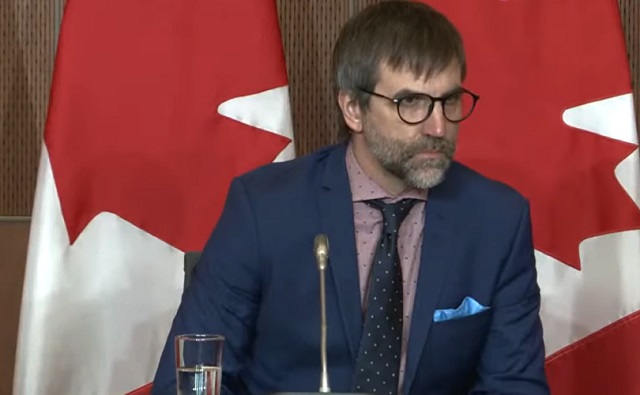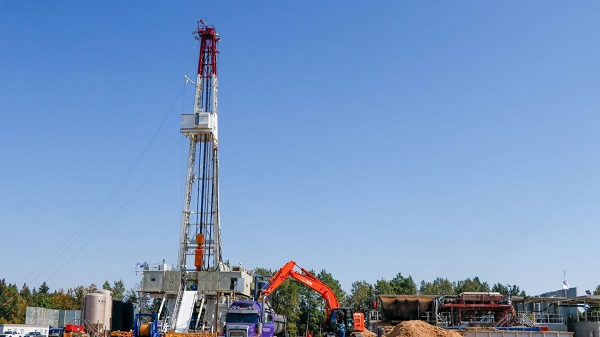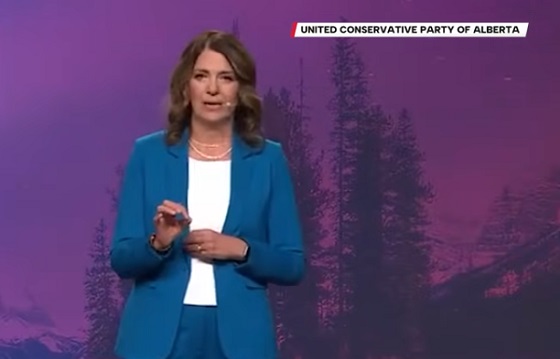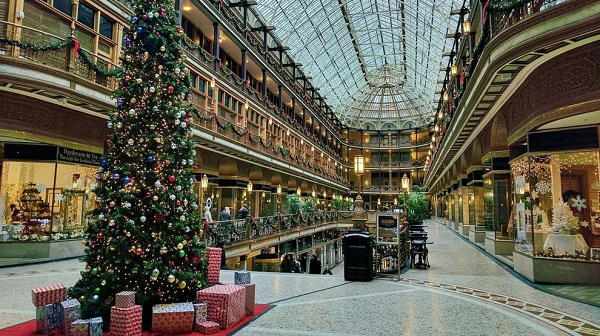Alberta
Trudeau gov’t pushing forward with net-zero regulations despite Supreme Court ruling

From LifeSiteNews
Environment Minister Steven Guilbeault claimed that a Supreme Court ruling returning power to the provinces does not affect federal plans to cap emissions from the oil and gas sector, nor the Clean Electricity Regulations.
The Liberal government is moving ahead with net-zero emission regulations despite a Supreme Court ruling restricting the federal government’s “no more pipelines” legislation.
On October 16, Environment Minister Steven Guilbeault declared that the Supreme Court ruling returning power to the provinces does not affect federal plans to cap emissions from the oil and gas sector, nor the Clean Electricity Regulations.
“The opinion of the court does not call into question other regulatory initiatives under development, and we are confident that they are within the purview of the federal government,” Guilbeault said in a statement to The Globe and Mail.
Guilbeault further claimed that the regulations are within Ottawa’s power to regulate as they are based on different federal authorities than the Impact Assessment Act.
The decision to press ahead with energy regulation comes on the heel of an October 13 ruling by the Canadian Supreme Court which found the Trudeau government’s 2019 Impact Assessment Act (IAA), dubbed the “no more pipelines” bill by critics, to be largely unconstitutional.
The Supreme Court declared that most of the IAA was unconstitutional with the exception of Sections 81 to 91, which refer to projects under federal authority on federal lands or outside Canada. Therefore, those projects would fall under federal jurisdiction and are not unconstitutional for the federal government to regulate.
However, the Court’s ruling did restore provincial autonomy over projects that don’t fall under federal jurisdiction, determining that the Trudeau government’s requirement that all provincial natural resource projects conform to the Liberals’ social and “climate change” policies is unconstitutional.
Guilbeault’s Monday statement comes as Canadians await the federal government’s amendment of the Canadian Environmental Protection Act, which is designed to phase out natural gas plants by 2030. The act is expected to be the means to implement the emissions cap and electricity regulations across the country.
His position echoes that of legal experts who warned that the Supreme Court’s decision will likely have no impact on other federal moves such as the Clean Electricity Regulations or oil sands emissions caps.
However, Guilbeault seems to be backtracking from his initial statement following the Supreme Court ruling; on that day, Guilbeault declared that the federal government is willing to “collaborate” with the provinces.
“We accept the court’s opinion,” he said during a virtual media meeting last Friday. “It provides new guidance on the Impact Assessment Act, while explicitly affirming the right of the government of Canada to put in place impact assessment legislation and collaborate with provinces on environmental protection.”
“We will now take this back and work quickly to improve the legislation through Parliament,” Guilbeault announced, but failed to give a timeline for the new legislation.
Alberta Premier Danielle Smith, a staunch opposer of Trudeau’s net-zero regulations, celebrated the court decision as returning power to the provinces.
“Today’s decision significantly strengthens our legal position,” Smith told reporters. “If they’re [the federal government] trying to pretend that they somehow still have the right to proceed with those offensive pieces of legislation that are clearly in our jurisdiction, they’re fooling themselves.”
Beyond the IAA, Alberta has been consistent in its fight against Trudeau’s push for increased energy regulations, with Smith repeatedly refusing to submit to the Liberal government’s demands, warning that Canadians could freeze in the winter if new “clean” electricity and energy regulations are enforced.
Late last month, Smith announced that she is preparing to use her province’s Sovereignty Act to fight the electricity regulations if the Trudeau government does not relent.
The draft version of the federal government’s “Clean Electricity Regulations” (CER) states that there will be billions in higher costs associated with a so-called “green” power transition, especially in the resource-rich provinces of Alberta, Saskatchewan, New Brunswick, and Nova Scotia, which use natural gas and coal to fuel power plants.
Business executives in Alberta’s energy sector have also warned that the Trudeau government’s fast-paced “green” transition could lead to unreliability in the power grid.
In addition to Smith, Saskatchewan Premier Scott Moe has likewise promised to fight back against Trudeau’s new regulations, saying recently that “Trudeau’s net-zero electricity regulations are unaffordable, unrealistic and unconstitutional.”
“They will drive electricity rates through the roof and leave Saskatchewan with an unreliable power supply. Our government will not let the federal government do that to the Saskatchewan people,” he charged.
The Trudeau government’s current environmental goals – in lockstep with the United Nations’ “2030 Agenda for Sustainable Development” – include phasing out coal-fired power plants, reducing fertilizer usage, and curbing natural gas use over the coming decades.
The reduction and eventual elimination of the use of so-called “fossil fuels” and a transition to unreliable “green” energy has also been pushed by the World Economic Forum (WEF) – the globalist group behind the socialist “Great Reset” agenda – an organization which Trudeau and some of his cabinet are involved.
Alberta
Emissions Reduction Alberta offering financial boost for the next transformative drilling idea

From the Canadian Energy Centre
$35-million Alberta challenge targets next-gen drilling opportunities
‘All transformative ideas are really eligible’
Forget the old image of a straight vertical oil and gas well.
In Western Canada, engineers now steer wells for kilometres underground with remarkable precision, tapping vast energy resources from a single spot on the surface.
The sector is continually evolving as operators pursue next-generation drilling technologies that lower costs while opening new opportunities and reducing environmental impacts.
But many promising innovations never reach the market because of high development costs and limited opportunities for real-world testing, according to Emissions Reduction Alberta (ERA).
That’s why ERA is launching the Drilling Technology Challenge, which will invest up to $35 million to advance new drilling and subsurface technologies.
“The focus isn’t just on drilling, it’s about building our future economy, helping reduce emissions, creating new industries and making sure we remain a responsible leader in energy development for decades to come,” said ERA CEO Justin Riemer.
And it’s not just about oil and gas. ERA says emerging technologies can unlock new resource opportunities such as geothermal energy, deep geological CO₂ storage and critical minerals extraction.
“Alberta’s wealth comes from our natural resources, most of which are extracted through drilling and other subsurface technologies,” said Gurpreet Lail, CEO of Enserva, which represents energy service companies.
ERA funding for the challenge will range from $250,000 to $8 million per project.
Eligible technologies include advanced drilling systems, downhole tools and sensors; AI-enabled automation and optimization; low-impact rigs and fluids; geothermal and critical mineral drilling applications; and supporting infrastructure like mobile labs and simulation platforms.
“All transformative ideas are really eligible for this call,” Riemer said, noting that AI-based technologies are likely to play a growing role.
“I think what we’re seeing is that the wells of the future are going to be guided by smart sensors and real-time data. You’re going to have a lot of AI-driven controls that help operators make instant decisions and avoid problems.”
Applications for the Drilling Technology Challenge close January 29, 2026.
Alberta
New era of police accountability

The Police Review Commission (PRC) is now fully operational, giving Albertans a single, independent process to file policing complaints and ensure accountability.
Alberta’s government is putting the province at the forefront of police oversight in Canada with the creation of the PRC. This new commission replaces the current patchwork of police investigating police with one independent body responsible for receiving complaints, conducting investigations and overseeing disciplinary hearings. By centralizing these functions within a single, independent agency, Alberta is ensuring complaints are handled fairly and consistently.
“The Police Review Commission represents a new era in how Alberta addresses policing complaints. These changes are part of a broader paradigm shift where police are no longer seen as an arm of the state, but rather an extension and a reflection of the community they serve. As an independent agency, it is committed to fairness, accountability and public trust, ensuring every complaint is investigated impartially and resolved openly.”
The Police Amendment Act, 2022 laid the groundwork for this new model, establishing a modern approach to oversight built on accountability, consistency and public confidence. The PRC will manage the full complaints process from receiving and assessing, to investigating and resolving complaints related to police conduct, including serious incidents and statutory offences.
“The Alberta Association of Chiefs of Police welcomes the launch of the Police Review Commission as a meaningful step toward enhanced oversight and greater transparency in policing. By ensuring complaints are reviewed fairly and impartially, the Commission will help strengthen accountability and reinforce public trust in Alberta’s police agencies. Police leaders across the province are committed to working with the Commission and our communities to ensure every Albertan has confidence in the integrity of our police services.”
A timely and transparent complaint resolution process is essential for both the public and police. That is why the PRC must complete investigations within 180 days, and if more time is needed, the chief executive officer must publicly report on delays and provide justification. This ensures clarity, predictability and accountability throughout the process. The commission will be arm’s length from government and police services, meaning people can have greater confidence that their complaints will be investigated and resolved impartially.
“Our goal is to build trust in policing by delivering timely resolutions and fair, consistent outcomes that put people first. Every complaint will be reviewed thoroughly and handled with the transparency and respect Albertans expect and deserve.”
The PRC can also initiate systemic reviews related to police conduct or emerging trends without the need for a public complaint, and these reviews must be made public. Together, these measures create a clear, accountable process that strengthens transparency, supports continuous improvement and enhances trust in how police oversight is carried out across Alberta.
“Public safety and the confidence the public has in our police services and service members are incumbent for effective and responsible service delivery. The PRC has been developed so that Albertans may have a responsible and impartial mechanism to voice concerns regarding delivery of policing services in Alberta. I am confident that the PRC will be an inclusive and diverse representation of the communities, so we may better understand the most appropriate and effective way to respond to concerns regarding police services. I look forward to the positive outcomes for the community.”
The commission’s design was informed by engagement with Indigenous communities, law enforcement partners, municipal officials and community organizations, ensuring its structure and training reflect Alberta’s diversity and values.
Quick facts
- The PRC will handle complaints in three categories:
- Level 1: Death, serious injury and serious or sensitive allegations involving all police services in Alberta, as well as peace officer agencies.
- Level 2: Allegations of criminal and other statutory offences involving all police services in Alberta.
- Level 3: Complaints about non-criminal misconduct involving officers employed by municipal and First Nations police services.
- Complaints that fall outside the three categories will be referred to the appropriate bodies or agencies for review.
- The Alberta Serious Incident Response Team (ASIRT) will now operate under the PRC.
-

 Energy2 days ago
Energy2 days agoCanadians will soon be versed in massive West Coast LPG mega-project
-

 Alberta2 days ago
Alberta2 days agoKeynote address of Premier Danielle Smith at 2025 UCP AGM
-

 Daily Caller2 days ago
Daily Caller2 days agoTom Homan Predicts Deportation Of Most Third World Migrants Over Risks From Screening Docs
-

 COVID-192 days ago
COVID-192 days agoThe dangers of mRNA vaccines explained by Dr. John Campbell
-

 Artificial Intelligence2 days ago
Artificial Intelligence2 days ago‘Trouble in Toyland’ report sounds alarm on AI toys
-

 C2C Journal1 day ago
C2C Journal1 day agoLearning the Truth about “Children’s Graves” and Residential Schools is More Important than Ever
-

 National1 day ago
National1 day agoMedia bound to pay the price for selling their freedom to (selectively) offend
-

 Alberta1 day ago
Alberta1 day agoNew era of police accountability




